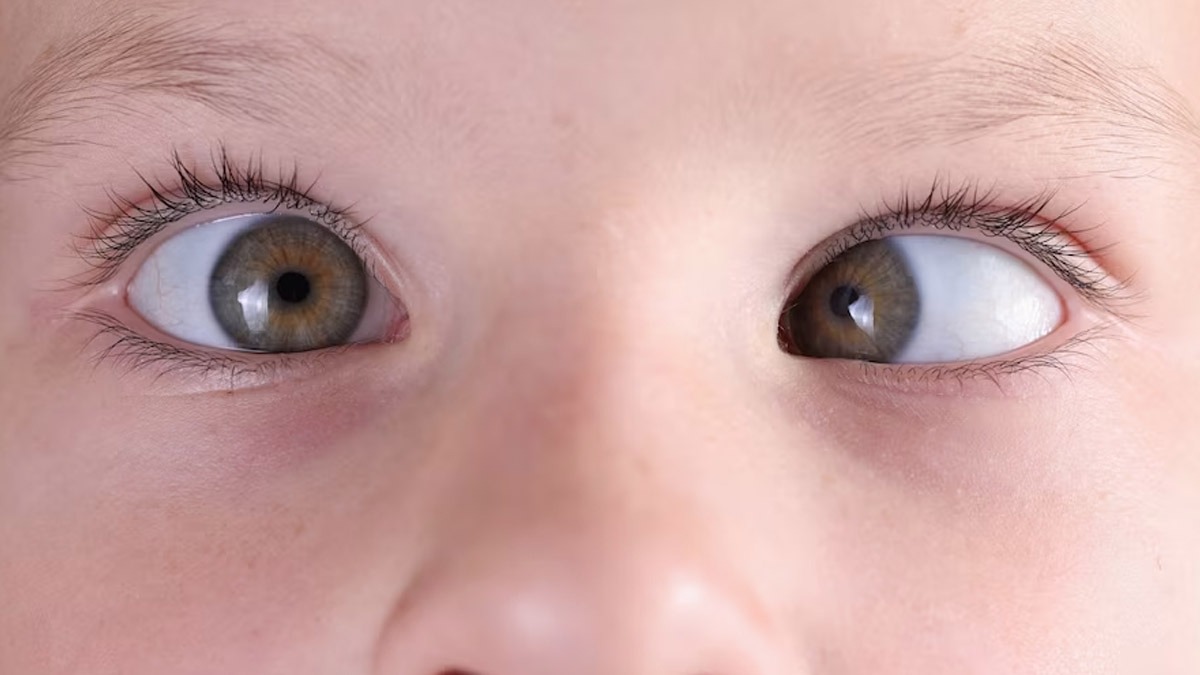Strabismus, commonly known as squint eye, is a condition where the eyes are misaligned, affecting both children and adults. This condition, which has impacted over 1 million people in India, can manifest in various types such as esophoria (inward), exophoria (outward), hyperphoria (upward), and hypophoria (downward), resulting in the eyes looking in different directions. Squint can also occur due to lazy eye or double vision. While surgery has traditionally been the main treatment, non-surgical approaches utilizing integrated methods have become increasingly popular due to their effectiveness and safety which have been used for squint eye treatment. This article explores the advantages of non-surgical and integrated treatment options and emphasizes the use of integrated methods like vision therapy, acupuncture, and natural nutritional supplements to improve eye alignment and enhance vision.
What is Squint Eye?

Squint eye, also known as strabismus, is a condition characterized by misaligned eyes that do not move together in the same direction. This misalignment can result in various vision problems, including double vision, poor depth perception, and eye strain. While surgical procedures have traditionally been used to correct squint eyes, non-surgical approaches have emerged as effective alternatives, particularly for addressing underlying issues contributing to the condition.
Non-Surgical Treatment Options:
Non-surgical treatments for squint eyes focus on improving eye coordination and muscle control through non-invasive methods. These approaches offer several advantages, including reduced risk, targeted treatment, and minimal downtime. Integrated methods such as vision therapy, electroacupuncture, and natural nutritional supplements have shown promise in improving eye alignment and vision clarity.
- Vision Therapy:
Vision therapy involves structured programs of specific eye exercises and activities designed to enhance eye coordination, focusing abilities, and visual processing skills. By retraining the eyes and brain to work together effectively, vision therapy can correct misaligned eyes and improve binocular vision.
- Electroacupuncture (Only if advised by the doctor):
Electroacupuncture involves the application of electrical stimulation to acupuncture points, enhancing the effects of traditional acupuncture. In the context of squint eye, electroacupuncture can improve muscle balance and coordination, leading to better eye alignment and reduced eye strain.
- Natural Nutritional Supplements:
Natural nutritional supplements containing vitamins, minerals, and antioxidants can support overall eye health and function. These supplements address underlying nutritional deficiencies contributing to squint eye and promote optimal eye alignment. Ingredients commonly found in such supplements include vitamin A, vitamin C, vitamin E, zinc, omega-3 fatty acids, lutein, and zeaxanthin. Vitamin A is essential for maintaining healthy vision, while vitamin C and vitamin E act as antioxidants, protecting the eyes from oxidative damage. Zinc plays a crucial role in supporting retinal health, and omega-3 fatty acids contribute to proper eye development and function. Lutein and zeaxanthin help filter harmful blue light and support macular health.
Benefits of Integrated Methods:
Integrated methods such as vision therapy, electroacupuncture, and natural nutritional supplements offer several advantages for treating squint eye:
– Targeted Treatment: Integrated methods target underlying issues contributing to squint eye, resulting in more effective and long-lasting results.
– Minimal Invasiveness: Unlike surgical interventions, integrated methods are non-invasive and carry minimal risk, making them safer options, especially for children.
– Holistic Approach: Integrated methods take a holistic approach to eye care, addressing not only physical symptoms but also underlying factors affecting eye alignment and vision clarity.
Case Studies:
Several case studies demonstrate the effectiveness of integrated methods in treating squint eye:
Case Study 1: A 7-year-old child with esotropia underwent a vision therapy program consisting of eye exercises and visual activities. After six months of treatment, the child’s eye alignment significantly improved, leading to reduced double vision and improved depth perception.
Case Study 2: A 35-year-old adult with exotropia received electro-acupuncture treatments to improve muscle balance and coordination. Within a few weeks of treatment, the individual noticed improved eye alignment and reduced eye strain, resulting in enhanced visual comfort.
Non-surgical integrated methods offer effective and safe alternatives for treating squint eye, improving eye alignment, and enhancing vision clarity. By addressing underlying issues contributing to squint eye and promoting optimal eye coordination, integrated methods can help individuals achieve better eye health and overall well-being. Through the use of vision therapy, electroacupuncture, and natural nutritional supplements, individuals with squint eye can experience improved eye alignment and enhanced vision, leading to a better quality of life.
